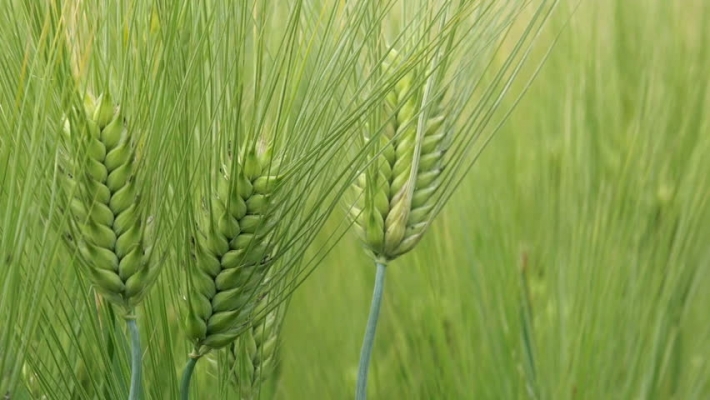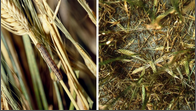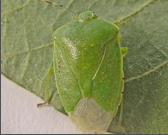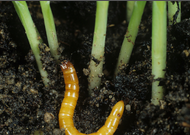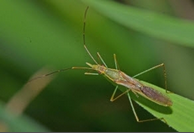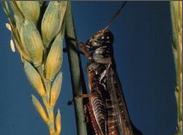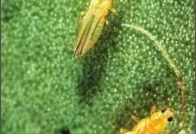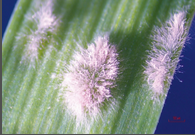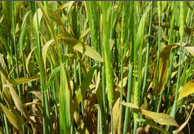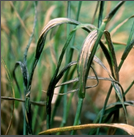Ratna: Developed at IARI, New Delhi. It is tolerant to saline-alkaline soil conditions. Ready to harvest in 125-130 days. Gives average yield of 10-12 qtl/acre.
Azad: Developed by C.S.A Kanpur. It is resistant to yellow rust disease. Gives higher yield when cultivated under irrigated conditions. Dual purpose variety, suitable for fodder and grains. Ready to harvest in 115-120 days. Gives average yield of 14-15 qtl/acre under irrigated conditions.
Vijaya: Developed by C.S.A Kanpur. Ready to harvest in 120-125 days. Gives average yield of 12-14 qtl/acre.
Dolama: Suitable for growing under rainfed hilly areas of UP. Ready to harvest in 140-150 days. It is resistant to yellow rust. It gives average yield of 12-15 qtl/acre.
Himani: Variety developed at Simla. Suitable for growing on medium and lower hills of UP. Gives average yield of 12.8-14 qtl/acre.
LSB 2: Suitable for growing on higher hills of UP. Ready to harvest in 145-150 days. Gives average yield of 10-12 qtl/acre.
Amber: Developed by C.S.A Kanpur. Ready to harvest in 130-133 days. Suitable for growing under rainfed areas of UP. It is good for malting purpose. Gives average yield of 10-12 qtl/acre.
Jyoti: Developed by C.S.A Kanpur. Suitable for growing under irrigated areas of UP. Ready to harvest in 120-125 days. Gives average yield of 8-10 qtl/acre.
C 164: Tall variety with compact ear. Grains are bold and amber. It is resistant to yellow rust. Suitable for cultivation under irrigated conditions.
BG 108: Developed at HAU, Hissar. Suitable for late sown cultivation. Ready to harvest in 120-125 days. It gives resistance to 120-125 days. Gives average yield of 8-10 qtl/acre.
Kedar: Developed at IARI, New Delhi. Suitable for late sown condition. Gives resistance to yellow rust.
Neelam: Developed at IARI, New Delhi. Grains are hulled and amber. Suitable for both irrigated and rainfed conditions.
PL 419: This variety suitable under rainfed condition. It has broad upright leaves. Plant height is 80cm. Resistant to yellow rust and smuts. Has thin husked bold seeds. Matures in 130 days. Gives average yield of 14 qtl/acre.
PL 172: Suitable for throughout Punjab state under irrigated condition. It is six row semi dwarf variety. Resistant to lodging. It is suitable for malting. It matures in 124 days. It gives average yield of 14 qtl/acre.
PL 807: Medium broad and upright leaves. It is highly resistive to lodging. Ears are dense and erect. Grains are of medium and light yellow colour. It is resistant to brown rust, yellow rust and loose rust. Ready to harvest in 137 days. Give average yield of 17.2 qtl/acre.
DWRUB52: This variety is having profuse tillering. Plant height is about 101 cm. Ears are dense, erect, arrow shaped and of medium size. It is resistant to brown rust, yellow rust and loose rust, covered smut and leaf blight disease. Give average yield of 17.3 qtl/acre.
VJM 201: Two variety having narrow and upright leaves. Plant height is of 118 cm. this variety prone to less lodging. Ears are dense and tapering. Grains are bold and white with thin husk. It is resistant to brown rust, yellow rust and loose rust and stripe disease. It is suitable for brewing industry. Matures in 135 days. It gives average yield of 14.8 qtl/acre.
RD 2035, BCU 73, DWRUB 64, RD 2503
PL 751, NARENDRA BARLEY 2, GETANJALI (K1149)

